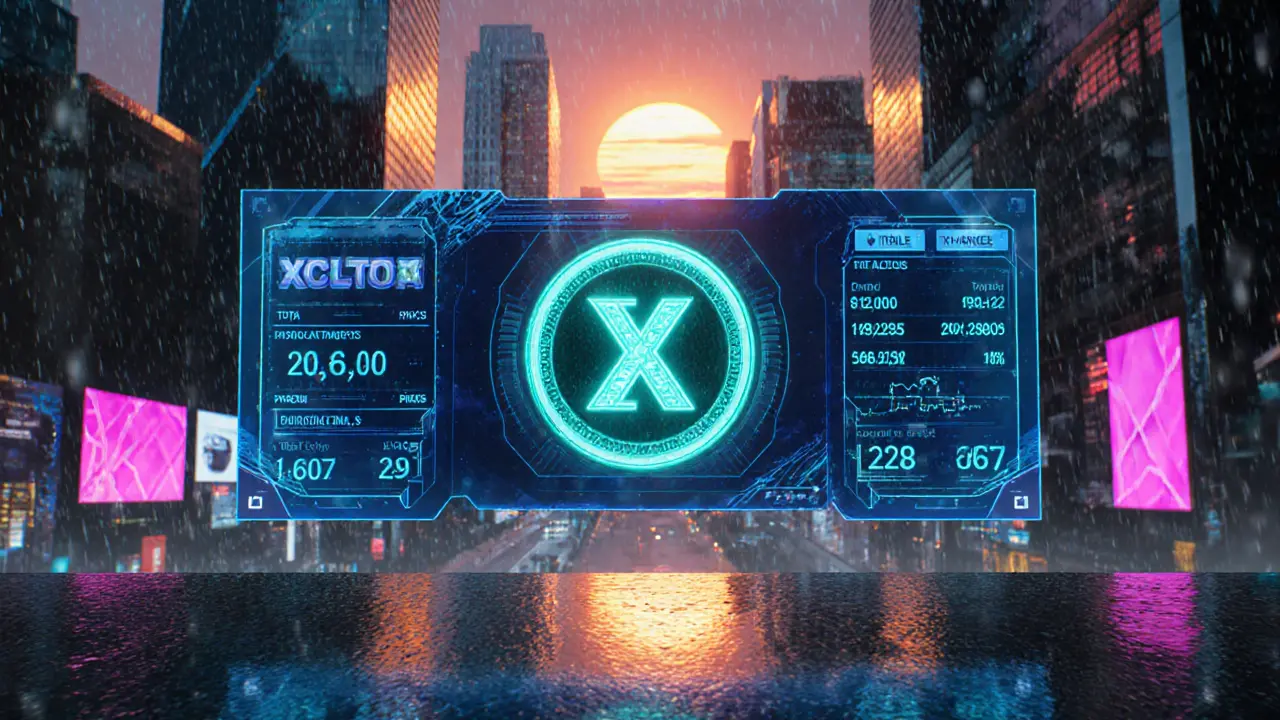Mercado Bitcoin Trading Fee Calculator
Calculate your trading fees on Mercado Bitcoin based on your trade size and whether you're a maker or taker. The platform charges 0.3% maker fee and 0.7% taker fee with volume discounts available after 10 BTC monthly volume.
Estimated Fees
Key Takeaways
- Largest crypto exchange in Brazil with >35% market share.
- Offers 330+ coins, 0.3% maker fee, 0.7% taker fee; volume discounts apply.
- Security includes 2FA, asset segregation, EY audits since 2022, but overall security rating is D (24/100).
- Feels more like a financial super‑app - PIX payments, digital fixed‑income products, loans.
- Only supports Brazilian Real (BRL) and Portuguese; international users face language and fiat limitations.
What is Mercado Bitcoin?
Founded on June 12 2013 by Rodrigo Batista in São Paulo, Mercado Bitcoin started as a pure cryptocurrency trading venue. By 2025 it has rebranded itself as a “financial hub,” hiding blockchain jargon from everyday users while still offering crypto‑centric services. The platform now combines exchange functionality with Brazil‑centric payment methods, tokenized credit, and digital income products.
How the Platform Works
New users create an account, submit identity documents, and wait 24‑48 hours for verification. Once approved, deposits can be made via bank transfer, PIX, or by sending crypto. The minimum deposit is just R$1, and withdrawals start at $1 (USD). All trades settle in Brazilian Real, which means you’ll see price pairs like BTC/BRL or ETH/BRL rather than the more familiar BTC/USD.
Fees, Limits, and Liquidity
Fees are straightforward:
- Maker fee = 0.3%
- Taker fee = 0.7%
- Higher‑volume traders enjoy reduced rates after 10 BTC worth of monthly volume.
There is no leverage beyond 1×, keeping risk exposure low. Because the exchange dominates the Brazilian market, liquidity is deep; spreads are tight and large orders are filled without slippage.

Security and Compliance
The exchange employs two‑factor authentication, segregates user assets from corporate funds, and reports data to Brazil’s ANPD (National Data Protection Authority). Annual audits are carried out by EY (Ernst & Young) since 2022, and the company has been audited every year since 2018. Despite these measures, independent rating agencies assign a D security score (24/100), flagging concerns around account recovery processes and limited anti‑phishing tools.
Beyond Trading - Financial Services
Mercado Bitcoin’s super‑app approach adds several non‑exchange products:
- Staking of popular PoS tokens with 5‑12% APY.
- Tokenized private‑credit offerings targeting underserved borrowers, aiming for $560 million issuance by year‑end.
- Digital fixed‑income products that mimic traditional CDBs but settle on blockchain.
- Crypto‑backed loans where users pledge Bitcoin as collateral.
- Remittance services that move money across Latin America using local payment rails.
All of these are accessed from the same mobile app, keeping the experience seamless for Brazilian residents.
Mobile App, Web Interface, and API
The web portal is clean but entirely in Portuguese, with limited English tooltips. The Android and iOS apps are praised for stability; however, they lack advanced features such as Face ID login, TradingView charts, or automated bot support. Basic advanced orders (stop‑limit, OCO) are available, and an API lets institutional clients pull market data, but retail users cannot run bots.

Pros and Cons - A Quick Verdict
| Strengths | Weaknesses |
|---|---|
| Largest BRL‑centric exchange, deep liquidity. | D security rating (24/100) raises safety concerns. |
| 330+ cryptocurrencies, low fees, volume discounts. | Only BRL supported; no USD or EUR pairs. |
| Integration with PIX, seamless fiat on‑ramp. | Portuguese‑only UI limits non‑native users. |
| EY‑backed annual audits, 2FA, asset segregation. | Restricted service in US, Iran, Iraq, Afghanistan, Yemen, Syria. |
| Financial products beyond trading (staking, credit). | No advanced charting, limited API for retail. |
Who Should Use Mercado Bitcoin?
If you are a Brazilian resident who wants to buy crypto using local banks, PIX, or cash deposits, this exchange is a natural fit. Its deep liquidity means you’ll get market‑fair prices, and the extra financial services let you earn yield without leaving the app.
Conversely, expats, travelers, or anyone needing to trade in USD/EUR will find the platform restrictive. The language barrier and modest security score also suggest caution for high‑value accounts.
Final Thoughts
Mercado Bitcoin stands out as Brazil’s clear market leader, offering a blend of exchange functionality and everyday financial tools. While its ambition to become a super‑app is admirable, the platform still wrestles with security perception and international accessibility. For domestic users, the convenience outweighs the downsides; for anyone outside Brazil, looking at alternatives like Binance or Coinbase may be wiser.
Frequently Asked Questions
Is Mercado Bitcoin safe to use?
The exchange uses 2FA, separates user funds, and undergoes annual EY audits, but independent rating agencies give it a D security score (24/100). Treat it as reasonably secure for modest balances, but consider additional safeguards for large holdings.
What fees does Mercado Bitcoin charge?
Maker fees are 0.3% and taker fees are 0.7%. Volume discounts kick in after about 10 BTC of monthly trading. There are no deposit fees for PIX or bank transfers, but withdrawals may incur network fees.
Can I trade with leverage on Mercado Bitcoin?
No. The platform only offers 1× leverage, focusing on low‑risk retail trading.
Is the platform available in English?
The primary UI is Portuguese. A few help‑centre pages have English snippets, but the full experience-including order entry and account settings-is not fully translated.
What additional services does Mercado Bitcoin provide?
Beyond spot trading, you can stake PoS tokens, take crypto‑backed loans, invest in tokenized private credit, and buy digital fixed‑income products. All are accessed from the same mobile app.
Overall, if you’re looking for a Brazil‑centric crypto gateway with a growing suite of financial tools, Mercado Bitcoin is worth a close look. Just keep an eye on security updates and be ready for the Portuguese‑only environment.







Comments
18 Comments
LeAnn Dolly-Powell
Wow, Mercado Bitcoin really feels like a one‑stop shop for anyone in Brazil! 🎉 The integration with PIX makes depositing a breeze, and the staking options give a nice side‑income without any extra hassle. If you’re just getting started, the low R$1 minimum is super friendly, and the 0.3% maker fee is hard to beat. Keep an eye on the security score, but for everyday use it’s pretty solid. 😊
Anastasia Alamanou
From a liquidity standpoint, the market‑depth on BTC/BRL is impressive, and the order‑book resilience reduces slippage even on sizable orders. Their fee schedule-0.3% maker and 0.7% taker-aligns with global benchmarks, and volume‑tier discounts kick in after roughly 10 BTC monthly, which is a solid incentive for high‑frequency traders. The platform’s API, albeit limited for retail, still supports RESTful endpoints for price feeds, enabling basic algorithmic strategies. Overall, the ecosystem is optimized for Brazilian fiat on‑ramps while maintaining competitive crypto‑pair offerings.
Rohit Sreenath
Looks like they’ve turned a crypto exchange into a glorified bank app. Sure, the fees are low, but the whole “super‑app” vibe feels like they’re trying to hide the real risks behind fancy features. The D security rating isn’t something you can just brush off, even if they have 2FA. If you care about your coins, maybe stick with a platform that’s transparent about its safety.
Sam Kessler
One must question the underlying audit transparency when EY is the sole auditor; such a monolithic relationship could mask systemic vulnerabilities. The D‑grade security metric, coupled with limited anti‑phishing mechanisms, suggests a deliberate obfuscation strategy to keep users complacent. In the broader cryptographic community, reliance on a single third‑party audit is a red flag, especially when state‑level surveillance can be subtly embedded in the platform’s codebase. This ecosystem appears engineered to channel user capital into a controlled financial silo under the guise of decentralization.
John Dixon
Oh great, another “top” exchange with a D‑rating-because nothing says “trustworthy” like a two‑digit security score!; Clearly, the 0.3% maker fee compensates for the existential dread you feel every time you log in. And hey, at least they’ve got PIX integration; that's the real revolution. 🎭
Steve Roberts
While the platform may feel like a bank, the 1× leverage policy actually protects traders from the speculative excesses we’ve seen on margin‑heavy exchanges. For newcomers, that restraint can be a safety net, reducing the chance of catastrophic liquidations. It's a paradox-limited risk can foster confidence in a market still finding its footing.
Brody Dixon
If you’re a Brazilian resident, the seamless PIX deposits can save you a lot of time and fees compared to wire transfers. The low entry barrier-just R$1-makes it accessible for anyone wanting to dip their toes into crypto without a huge upfront commitment. Just remember to enable 2FA and keep your recovery phrases offline.
Mike Kimberly
Mercado Bitcoin has undeniably reshaped the Brazilian crypto narrative, evolving from a modest exchange into a quasi‑banking super‑app that intertwines traditional finance with digital assets. Its dominance, reflected in a 35 % market share, stems from an aggressive localization strategy that leverages PIX, the country’s instant payment system, to lower friction for users accustomed to rapid fiat transactions. By offering over 330 coin listings, the platform caters to a wide spectrum of investors, from those seeking Bitcoin’s store‑of‑value properties to enthusiasts chasing high‑yield DeFi tokens. The fee structure-0.3 % maker and 0.7 % taker-places it competitively against global peers, while volume‑based discounts reward active traders without imposing hidden costs.
Liquidity on major pairs such as BTC/BRL remains deep, ensuring tight spreads and minimal slippage even during volatile market swings, which is particularly valuable for large‑scale institutional participants entering the South American market. Security measures, including mandatory two‑factor authentication and asset segregation, demonstrate a commitment to safeguarding user funds, yet the D rating from independent assessors highlights lingering concerns around account recovery and anti‑phishing tools that the platform has yet to fully address. The annual EY audits since 2022 add a layer of credibility, but a single auditor cannot substitute for a diversified oversight regime.
Beyond pure trading, the integration of staking services offering 5–12 % APY, tokenized private‑credit products, and crypto‑backed loans illustrates a strategic pivot toward revenue diversification and user retention. These financial services position Mercado Bitcoin as more than a market venue; they aim to embed themselves into everyday financial habits, blurring the line between crypto and conventional banking. However, the exclusive focus on the Brazilian Real and Portuguese-language UI creates barriers for expatriates and international traders, limiting its appeal in a globally interconnected ecosystem.
Regulatory compliance remains a double‑edged sword: while alignment with Brazil’s ANPD and adherence to KYC/AML protocols foster trust among local users, they also constrain innovation and the rapid rollout of new features seen on more permissive platforms. For domestic investors, the convenience and deep liquidity often outweigh these drawbacks, making Mercado Bitcoin a logical first stop for crypto exposure. Conversely, those seeking multi‑currency pairings or English‑language support may find the platform restrictive and opt for alternatives like Binance or Coinbase. Ultimately, as Brazil’s crypto market matures, the exchange’s ability to enhance security, broaden fiat options, and improve multilingual accessibility will determine whether it remains a market leader or becomes a regional niche player.
Patrick Rocillo
Gotta say, the combo of staking and crypto‑backed loans is a sweet spot for anyone looking to make their idle tokens work harder. 🌟 The app’s stability on both Android and iOS makes daily trading feel less like a chore and more like a hobby. Just keep an eye on the security rating, but overall the user experience is pretty polished.
Aniket Sable
i think the low R$1 minimum is awesome for newbies, u dont need a big cash stack to start. also, the 0.3% maker fee is pretty cool compared to other exchanges. just make sure u set up 2FA and youre good to go!
Santosh harnaval
The D rating really should scare you.
Claymore girl Claymoreanime
Allow me to elucidate: a D‑grade security rating is not a trivial footnote-it fundamentally undermines the platform’s credibility. Even with EY’s annual audits, the lack of robust anti‑phishing protocols suggests systemic negligence. If you’re serious about safeguarding assets, you’d be wiser exploring exchanges with transparent, multi‑layered security architectures.
Will Atkinson
Indeed, the PIX integration is a game‑changer-fast, cheap, and unbelievably convenient!; It lowers the entry barrier for countless Brazilians who were previously intimidated by complex banking procedures. Keep the optimism alive, and remember to diversify your holdings.
Prabhleen Bhatti
The deep dive you provided really highlights how Mercado Bitcoin is threading the needle between traditional finance and decentralized services. It’s fascinating to see how the platform leverages Brazil’s unique payment infrastructure to fuel crypto adoption. However, the security concerns you mentioned raise questions about how resilient the ecosystem is to targeted attacks. Do you think the upcoming regulatory updates in Brazil will force them to elevate their security posture? Also, the exclusive reliance on BRL could become a bottleneck if cross‑border demand spikes. It would be interesting to monitor whether they’ll expand language support or add USD/EUR pairs in the near future. Overall, the blend of liquidity depth and product diversification makes it a compelling case study for emerging markets.
Elizabeth Mitchell
The super‑app approach seems convenient, but it does feel like a one‑size‑fits‑all solution. For locals it probably works well, yet the lack of English could deter foreign investors. Time will tell if they adapt.
Chris Houser
From a risk‑management perspective, the segregation of user assets from corporate balances is a best‑practice that mitigates counterparty exposure. Coupled with two‑factor authentication, these controls form a solid baseline, though the platform could benefit from multi‑signature wallets to further harden security. Diversifying across multiple exchanges remains a prudent strategy for any portfolio aiming to balance yield opportunities with custodial risk.
William Burns
It is incumbent upon the discerning investor to evaluate the fiduciary responsibilities of custodial entities with utmost rigor, thereby ensuring that the sanctity of capital remains uncompromised.
Ashley Cecil
While competitive fee structures are alluring, ethical considerations mandate that users prioritize platforms with demonstrable security integrity over marginal cost savings.
Write a comment